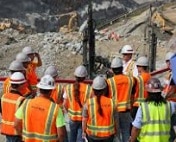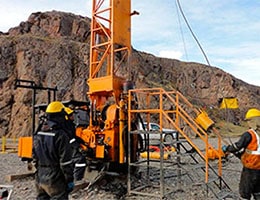 Geotechnics or geotechnics consists of resorting to engineering precepts for the development of public works according to the qualities of the materials found in the planet's crust. It can be considered a branch of geology or civil engineering .
Geotechnics or geotechnics consists of resorting to engineering precepts for the development of public works according to the qualities of the materials found in the planet's crust. It can be considered a branch of geology or civil engineering .
Through geotechnics, the materials that make up the Earth's crust are investigated for the proper design and execution of civil engineering works. The construction of dams, roads (routes), bridges and oil pipelines, to name a few possibilities, requires the application of geotechnics since it is necessary to know the physical conditions of the environment and the mechanical properties of the soil, among other issues.
An expert in geotechnical engineering, therefore, handles the essential concepts of geology and geophysics and understands the pillars of hydraulics and mechanics. Their knowledge of rocks contributes to minimizing risks for both people and the environment, as it reduces the possibilities of land subsidence, landslides and land displacement.
The geotechnics specialist is in a position to devise and apply measures to avoid disruptions linked to the development of the works . The creation of containment structures and the control of water through walls, gutters, filters, anchors and other tools are part of their work.
It should be noted that Karl von Terzaghi (1883-1963) is noted as the precursor of geotechnical engineering. Throughout his entire professional career he dedicated himself to analyzing problems linked to foundations and soils , pouring his work into texts that are considered the bases of geotechnics.
Terzaghi's name stood out especially through the edition of his book called Erdbaumechanik , which can be translated as "mechanics of construction above ground." He later collaborated with Ralph B. Peck and Gholamreza Mesri in the publication of Soil Mechanics in Practical Engineering , another book that served to lay the foundations of this science.
 Many years ago, the first conception of geotechnics included only the sciences known as rock mechanics and soil mechanics . The first is the theoretical science that is applied to the behavior of rocks and massifs from a mechanical point of view. This is the part of mechanics that concerns the response that rocks manifest to the force fields of their physical environment.
Many years ago, the first conception of geotechnics included only the sciences known as rock mechanics and soil mechanics . The first is the theoretical science that is applied to the behavior of rocks and massifs from a mechanical point of view. This is the part of mechanics that concerns the response that rocks manifest to the force fields of their physical environment.
In addition to being part of geotechnics, rock mechanics is part of geomechanics, a discipline that studies the mechanical response of geological materials , such as soils. Its fields of application include civil, petroleum and geological engineering.
On the other hand we have soil mechanics, which consists of applying the laws of natural sciences and physics to problems that revolve around the loads that are imposed on the outer layer of the Earth's crust . It was Karl von Terzaghi who founded it in 1925. Let us not forget that most works belonging to civil engineering use the ground for support, either directly or indirectly, and many take advantage of the land as a construction material, so that this science is of vital importance in modern life.
Over time, geotechnics began to cover more topics, including the development of geotechnical materials, seismic engineering, soil-structure interaction, and soil improvement. Despite this, it is necessary to point out that it is one of the most recent branches of civil and geological engineering, and therefore it is in full evolution .
